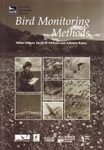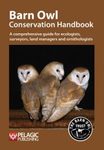By: Gerrit J Viljoen(Author), AG Luckins(Author), I Naletoski(Author)
61 pages, 4 colour & 11 b/w illustrations
![Stable Isotopes to Trace Migratory Birds and to Identify Harmful Diseases Stable Isotopes to Trace Migratory Birds and to Identify Harmful Diseases]()
Click to have a closer look
About this book
Contents
Customer reviews
Related titles
About this book
Stable Isotopes to Trace Migratory Birds and to Identify Harmful Diseases discusses the potentials of the approaches as mentioned below to monitor avian influenza viruses (AIVs) in wild migratory waterfowl (WMW). Molecular diagnostic platforms enable for accurate detection of the AIVs in the feces of infected birds. Similar technologies can be used to determine the bird species through DNA barcoding, enabling non-invasive research on the epidemiology of the disease.
WMW play significant role in the transmission of AIVs on large distances. Understanding bird migrations may therefore significantly contribute towards understanding of the disease epidemiology, however most conventional approaches to trace WMW migrations are based on capturing, tagging (mostly ringing or GPS devices) and their re-capturing to link the departure and arrival places.
Stable isotope ratios in metabolically inert tissues (feathers, beaks, claws) reflect the ratios present at the point of intake (drinking or feeding), thus enabling for tracing bird origins at stopover places.
Molecular diagnostic platforms such as the polymerase chain reaction (PCR) enable for accurate detection of the AIVs in the feces of infected birds. Similar technologies (genetic sequencing) can be used to determine the bird species through DNA barcoding. Simple and easy collection of feather and fecal samples at the stopover places may generate a full information package on which species of WMW carries the AIVs (PCR+DNA barcoding on the feces), as well as the origin of these species (SI+DNA barcoding on the feathers). Therefore, such approaches enable for research on the epidemiology and the ecology of the AIVs in WMW using a non-invasive platform, which does not require capturing of WMW. This manuscript discusses the potentials of these approaches to monitor the AIVs in WMW.
Contents
1. INTRODUCTION 2
1.1. Background analysis 2
1.2. Migratory Birds and HPAI 5
1.3. Using SIA to understand the dissemination of HPAI - The way ahead! 7
2. ANIMAL MIGRATION TRACKING METHODS 10
2.1. Extrinsic Markers 10
2.2. Intrinsic markers 15
2.2.1. The Nitrogen Cycle 21
2.2.2. The Sulphur Cycle 22
2.2.3. The Oxygen Cycle 22
2.2.4. The Hydrogen Cycle 23
2.3. The Stable Isotopes of Water on a Spatial Scale 24
2.4. Deriving isoscapes in the absence of GNIP data 27
2.5. Use of Stable Isotopes for Migration Studies 28
2.6. Approaches for Determining Migratory Connectivity 32
2.6.1. Classification Trees to Predict Origins 38
2.6.2. Likelihood-Based Methods to Predict Origins 38
2.6.3. Migration Studies using Stable Isotopes. 39
2.6.4. Determining migratory connectivity for waterfowl in Asia 41
3. PRACTICAL CONSIDERATIONS 46
3.1. Sample Collection and Tissue Preparation 46
3.1.1. Questions of Sample Heterogeneity 48
3.1.2. Preparation of feather samples 48
3.2. Other Stable Isotopes for Migration Research 52
3.2.1. Sampling Instructions for Water delta18O and delta2H - Rivers / Lakes / Groundwater 52
3.2.2. Sampling Instructions for Bird Feathers for use in SIA 53
3.2.3. Sampling wild birds in the field 55
3.2.4. Sampling Strategy for H5N1 56
4. REFERENCES 60
Customer Reviews
By: Gerrit J Viljoen(Author), AG Luckins(Author), I Naletoski(Author)
61 pages, 4 colour & 11 b/w illustrations






















![Ageing & Sexing of Migratory East Asian Passerines [English / Chinese]](http://mediacdn.nhbs.com/jackets/jackets_resizer_medium/25/250760.jpg?height=150&width=115)












